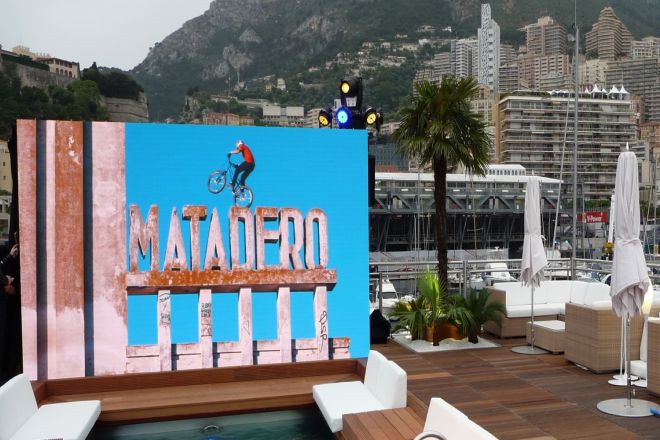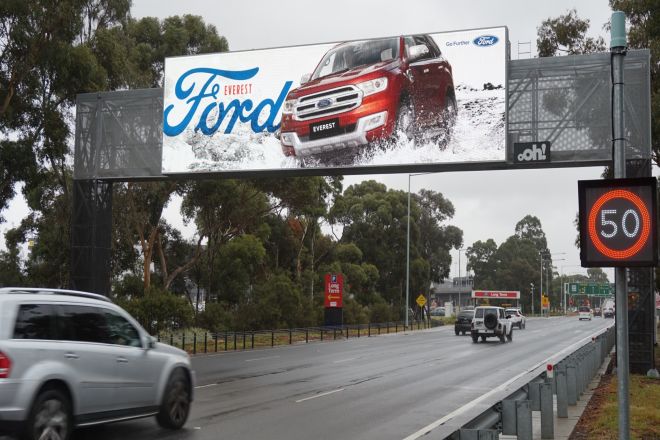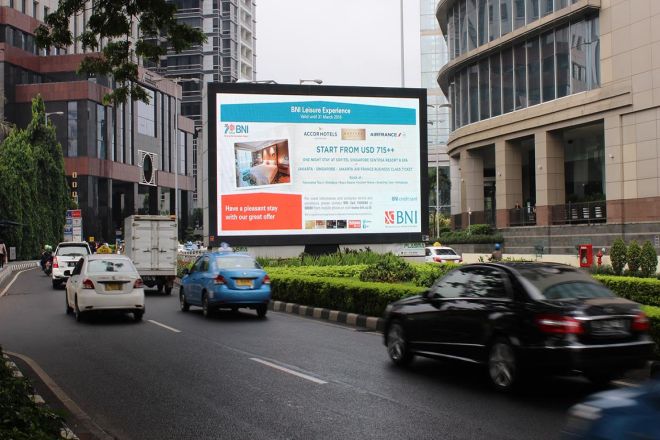序章

As an important display device, the LED表示画面 is widely used in commercial advertising, public information releases, sports events, and other occasions.
Its picture quality is directly related to the effect of information transmission and the audience’s visual experience. This article will discuss several major factors that affect the picture quality of LED displays, hoping to provide readers with a more in-depth understanding and reference.
1. LED chip quality and selection
As the core component of the display screen, the LED chip plays a vital role in the picture quality of the LED display screen. Its quality directly determines the brightness, color saturation, and stability of the picture and is the cornerstone of high-quality display pictures.
First of all, the quality of LED chips is closely related to brightness. Brightness is one of the important indicators for evaluating the performance of an LED display. It determines whether the display can remain clearly visible in a bright environment. High-quality LED chips can provide higher brightness, ensuring that the display can present a bright and vivid picture under various light conditions.
Secondly, the color performance of LED chips is also a key factor in picture quality. The wide color gamut means that the LED chip can present richer and more realistic colors, making the picture more vivid and realistic. By using advanced color correction technology, high-quality LED chips can ensure that the display screen remains accurate and vivid when displaying various colors.
In addition, the life of the LED chip is also a factor that cannot be ignored. Long-life LED chips mean that the display has a longer service life, which can reduce the decline in picture quality and increase maintenance costs caused by chip aging. Therefore, when purchasing an LED display, you should pay attention to the service life and reliability of the chip.
In terms of selection, the appropriate LED chip should be selected based on actual needs and budget. Different brands and models of LED chips may have differences in performance, so performance indicators such as brightness, color, and lifespan, as well as price factors, should be comprehensively considered when selecting.
At the same time, it is also necessary to pay attention to the compatibility of the chip and other components of the display to ensure the stability and reliability of the entire system.
2. Performance of drive and control systems

The drive and control system is an important part of the LED display screen. They are responsible for converting video signals into image information that the display screen can recognize and present. The efficiency and accuracy of this process are directly related to the smoothness and stability of the picture and are the key to ensuring high-quality display effects.
First of all, a high refresh rate is one of the important indicators of drive and control system performance. A high refresh rate means the display can update the picture faster, reducing stuttering or smearing caused by insufficient frame rate. Especially when playing dynamic videos or displaying high-speed sports scenes, the high refresh rate can ensure the continuity and smoothness of the picture, bringing a more realistic visual experience to the audience.
Secondly, low latency is also the goal pursued by the drive and control system. Excessive delay will cause a mismatch between the picture and sound, affecting the audience’s viewing experience. The excellent drive and control system reduces the delay time by optimizing signal transmission and processing processes, allowing the picture and sound to be presented simultaneously and enhancing the immersion of viewing.
In addition, intelligent adjustment functions are another highlight of modern drive and control systems. These systems automatically adjust the display’s brightness and contrast based on ambient light and viewing distance. In a dark environment, reduce the brightness to reduce eye fatigue.
In a strong light environment, increase the brightness to ensure picture clarity. At the same time, the zoom and focus of the picture are automatically adjusted according to the viewing distance to ensure that the audience can get the best viewing effect at any position.
Finally, stability and reliability are also important criteria for evaluating the performance of drive and control systems. A stable system can ensure continuous operation for a long time without failure, providing viewers with a continuous, high-quality viewing experience. The reliable control system can withstand various interferences and faults and ensure the screen is normally displayed.
3. Display resolution and pixel pitch
Resolution and pixel pitch are important parameters of LED displays, which directly determine the delicacy and clarity of the picture and are crucial to improving the audience’s visual experience.
First of all, resolution refers to the number of pixels on the display screen, usually expressed in the form of the number of horizontal pixels × the number of vertical pixels. High resolution means the display can deliver more detail and richer color gradations. When playing high-definition videos or displaying delicate images, a high-resolution display can present a clearer and more realistic picture effect, allowing the audience to better feel the details and layering of the picture.
Secondly, pixel pitch refers to the distance between adjacent pixels. A smaller pixel pitch means that the pixels are denser, which helps to reduce the graininess of the picture and makes the picture smoother and more delicate. When viewed at close range, a display with a small pixel pitch can reduce the gaps between pixels, making the picture more coherent and improving the overall look and feel.
When purchasing an LED display, you should choose the appropriate resolution and pixel pitch according to your actual needs. For example, in places such as large outdoor billboards or stadiums, because the audience is far away, you can choose a display with moderate resolution and a slightly larger pixel pitch to reduce costs and meet basic viewing needs.
In places such as shopping malls and exhibition halls for close viewing, you should choose a display with high resolution and small pixel pitch to present a more delicate and realistic picture effect.
It should be noted that the resolution and pixel pitch are not higher but should be considered comprehensively based on the actual application scenario and budget.
Too high a resolution and too small a pixel pitch can increase costs and may not be necessary in some cases. Therefore, when purchasing an LED display, you should consider the resolution, pixel pitch, and other factors to choose the display that best suits your needs.
4. Installation and debugging technology

The installation and debugging technology of the LED display screen has a decisive impact on the quality of the final picture. Proper installation and careful debugging can not only ensure a good viewing experience for viewers but also extend the service life of the display.
First of all, installation technology is crucial. The installation angle and position of the display screen need to be accurately set according to the actual site and usage requirements.
For example, when installing outdoors, you need to consider wind and water resistance to ensure the display is stable and able to withstand the effects of harsh weather. When installing indoors, you need to consider the distance, angle, and height of the display screen from the audience to provide the best viewing effect for the audience.
Secondly, debugging technology cannot be ignored. After the display is installed, a series of debugging works are required to ensure the quality and stability of the picture. This includes adjustments to brightness and color difference, correction of picture uniformity, etc.
Through fine debugging, problems such as color aberration and uneven brightness in the picture can be eliminated, making the picture clearer and more vivid and improving the uniformity and consistency of the overall picture.
In addition, during the debugging process, some technical details need to be considered. For example, it is necessary to ensure that the signal transmission between the sending card and the receiving card is stable to avoid signal loss or delay. At the same time, regular maintenance and upkeep of the display screen is also required to ensure that it is always in optimal working condition.
5. The influence of environmental factors
Environmental factors play a vital role in ensuring the picture quality of LED displays. Different environmental conditions may have a significant impact on the display performance and service life of the display. Therefore, when using LED displays, various environmental factors must be fully considered and properly dealt with.
First, strong light exposure is a common challenge. Outdoors or in a strong light environment, sunlight or other light sources may directly illuminate the display, causing reflections or glare on the screen. This not only reduces the clarity of the picture but may also make the audience feel uncomfortable, seriously affecting the viewing experience.
Therefore, during site selection and installation, you should try to avoid direct exposure of the display screen to strong sunlight, use shading facilities, adjust the brightness and contrast of the display screen, and use other methods to reduce the effects of reflection and glare.
Secondly, temperature is also an environmental factor that requires special attention. The LED display screen will generate a certain amount of heat during its working process. If the heat dissipation is poor, it may cause the chip temperature to rise, thus affecting its performance and stability.
Excessive temperature may reduce the luminous efficiency of the LED chip and even cause damage. Therefore, when installing and using the display, good ventilation and heat dissipation conditions should be ensured to prevent the internal temperature of the display from being too high. For example, the spacing and arrangement of the display screens can be reasonably set, and natural wind can be used, or fans, air conditioners, and other equipment can be installed for heat dissipation.
In addition, other environmental factors such as humidity and dust may also affect the picture quality of LED displays. Excessive humidity may cause short circuits or corrosion in the display’s internal circuitry, while dust accumulation may affect the clarity and brightness of the picture. Therefore, during use, the display screen should be cleaned regularly to ensure that it is in a suitable humidity environment.
6. Maintenance and maintenance of LED display screen

The maintenance and upkeep of LED display screens is a key link to ensure picture quality and extend service life. Through regular cleaning, dust removal, inspection, and maintenance, potential problems can be effectively prevented, the display effect can be improved, and a better visual experience can be brought to the audience.
First of all, regular cleaning is essential. Since LED displays are exposed to the outside for long periods of time, dust and dirt can easily accumulate. This dirt will not only affect the clarity of the picture but may also have a negative impact on the heat dissipation performance of the display.
Therefore, we need to use a soft cotton cloth dipped in detergent to gently wipe the display surface to ensure that the LED lamp beads or screen are not damaged during the cleaning process. At the same time, the liquid should not enter the display to prevent short circuits or other failures.
Secondly, dust removal is equally important. The accumulation of dust will not only affect the quality of the picture but may also have a negative impact on the display’s heat dissipation performance. Therefore, we need to regularly remove dust around the display to ensure that the cooling holes are unobstructed.
In addition to cleaning and dusting, regular inspections and maintenance are also essential. We need to regularly check whether the various components of the display are working properly, such as checking whether the power cord is loose, whether there are damaged wires, etc.
At the same time, you also need to check whether the brightness and color of the display are normal and whether there are blackening, flickering, etc. If an abnormality is found, it needs to be adjusted and repaired in time to avoid affecting the display effect and service life.
In addition, in order to keep the display screen dry and prevent rain and moisture from entering, we can take waterproof measures, such as installing a waterproof cover, adding waterproof tape, etc. These measures can effectively prevent moisture from causing damage to the display.
結論
To sum up, there are many factors that affect the quality of LED display screens, including LED chip quality and selection, drive and control system performance, display screen resolution and pixel pitch, installation and debugging technology, environmental factors, and maintenance. Etc.
In practical applications, we need to comprehensively consider these factors, select a suitable LED display, and use and maintain it rationally to obtain the best viewing effect and user experience.
最後に、LEDディスプレイについてもっと知りたい方は、 ご連絡ください。
